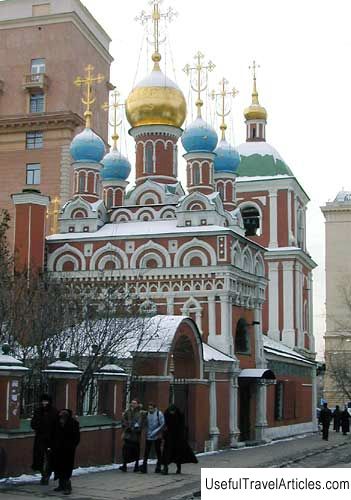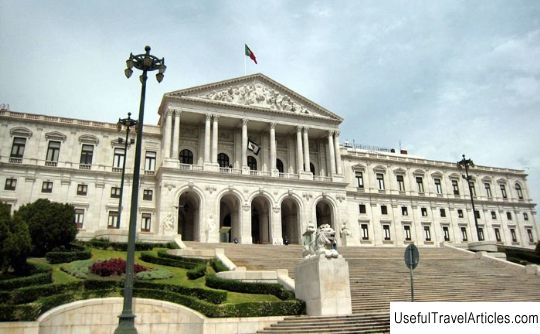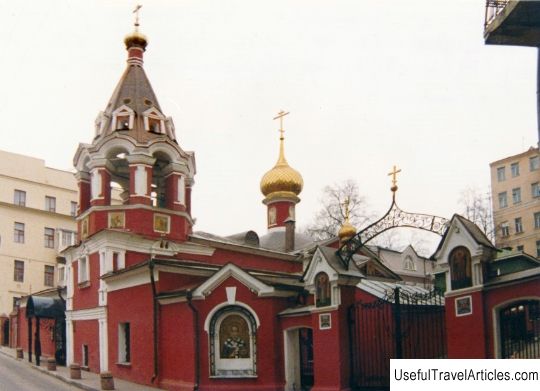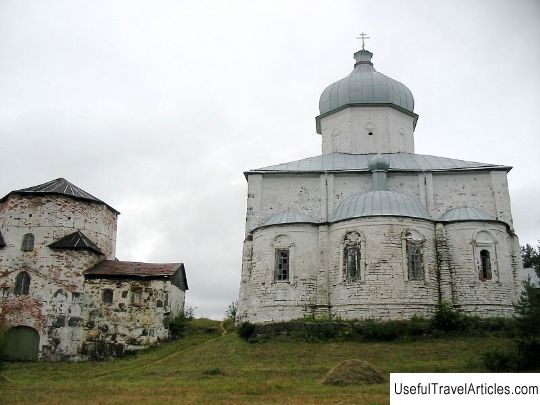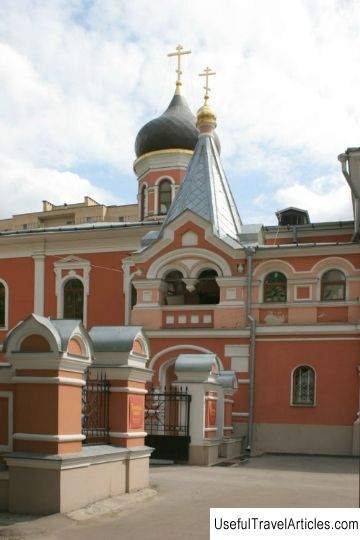New Jerusalem monastery description and photos - Russia - Moscow region: Istra
Rating: 7,5/10 (900 votes) 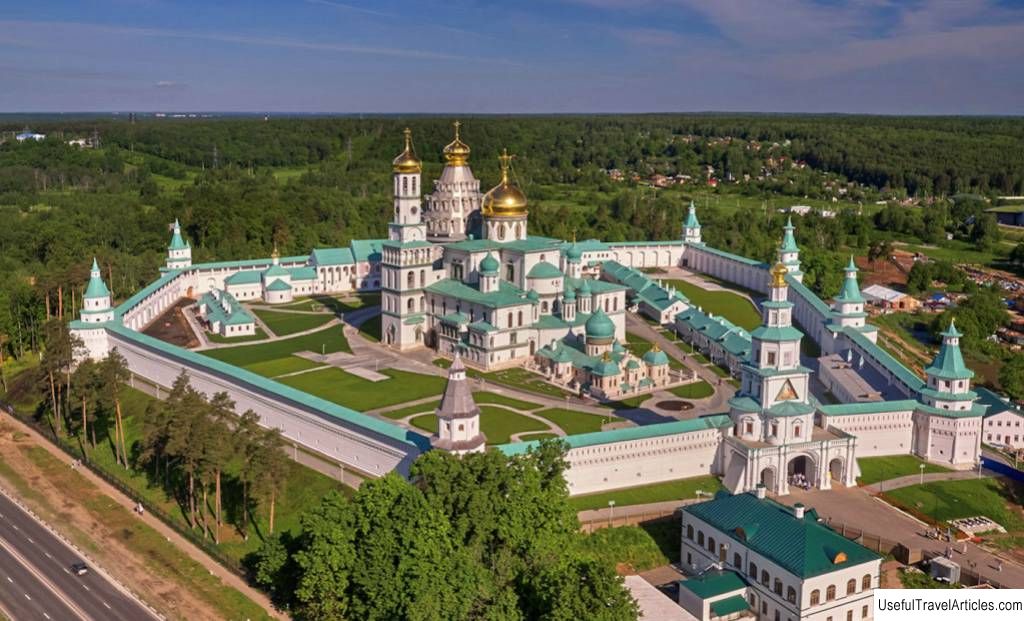
New Jerusalem monastery description and photos - Russia - Moscow region: Istra. Detailed information about the attraction. Description, photos and a map showing the nearest significant objects. Photo and descriptionThe New Jerusalem Resurrection Monastery in the city of Istra is the pearl of the Moscow region. The monastery was founded by Patriarch Nikon . It houses a unique, recently restored 17th century temple, striking the imagination with its unusual architecture. The largest historical and art museum of the Moscow region is also located here. Patriarch NikonPatriarch Nikon is the most famous and controversial church figure of the 17th century. He was born into a family of wealthy peasants. From childhood, the boy had good abilities, learned to read, sing, and fell in love with the church service. When he became a priest, he received a good parish in Moscow. At first he was an ordinary married priest, but his personal life did not work out. We don't know the details but tragedy struck - all his children died. Then he and his wife decided to go to a monastery. Soon Nikon began to make a career - he was elected hegumen of the Kozheozersky monastery near Arkhangelsk. And when he went to Moscow to introduce himself to Tsar Alexei Mikhailovich, he liked him so much that the tsar persuaded him to stay in Moscow. Friendship ensued. Soon Nikon enters the circle of the tsar's associates, who have a huge influence on him and think about a great deed - church reforms. Since 1652 Nikon becomes patriarch . He considers his main business to be the correction of liturgical books. Most of the tests were translated from Greek a long time ago; many errors have accumulated in them over the years of rewriting. Nikon and his circle propose to check the texts with modern Greek and correct mistakes. But if this can still somehow be accepted, then his innovation - the sign of the cross with three fingers, and not two - the people cannot accept. The patriarch prefers to act by force. In 1656 he assembled a cathedral of bishops. They declare heretics all who continue to cross themselves with two fingers, not three, and do not want to use the corrected books. Church schism begins . New Jerusalem Monastery In the same year, Nikon started a grandiose construction near Moscow. He wants to create a new center for all Orthodoxy , New Jerusalem. The monastery was supposed to stand on a high hill (it was specially filled up and strengthened). The area was renamed. The main hill was now called Zion , next to it appeared the mountains Olives and Tabor , Istra was renamed Jordan . They tried to build the main cathedral of the monastery on the model of the main temple of Jerusalem - the Church of the Holy Sepulcher . At first, all structures were wooden. But even the wooden construction of such a large complex demanded an enormous exertion of forces from the monastery peasants. They complained of backbreaking work and isolation from their families. In 1658, the monastery was consecrated. Alexey Mikhailovich looks at her from the Mount of Olives and confirms - yes, this is New Jerusalem. But a year later the relationship between Nikon and the tsar deteriorates. Nikon is too power-hungry and seeks to put the church in the first place in the state, to make the power of the patriarch more sovereign. Intrigues are being woven against him, and the king himself is already dissatisfied with such an elevation of an old friend. A spat ensues, and the Patriarch demonstratively leaves Moscow for the New Jerusalem Monastery. Resurrection Cathedral Here he continues to build. In 1658 the Resurrection Cathedral was laid - and for the rest of his life Nikon monitors its construction. This is his favorite child. The cathedral consists of many churches - at first it was assumed that there would be 365 thrones. As a result, there were 29 of them (now - 14). The bell tower has seven tiers, and the main bell weighs almost six tons. But under Nikon the cathedral was not completed. The conflict with the king and the clergy continues to develop. Nikon is on trial (in particular, he is accused of calling the built monasteries by too loud and inappropriate names). Nikon is deprived not only of the patriarchate, but also of the priesthood and exiled to Ferapontov Monastery . Only after the death of Alexei Mikhailovich is Nikon allowed to return here, but he is already old, sick and dying along the way. He is still sung as a patriarch and buried in the same manner in the unfinished Resurrection Cathedral. The Resurrection Cathedral was completed in 1685. It turned out to be simpler than Nikon intended it. But still grandiose. His 18-meter tent was a huge technical achievement for that time, it had never been built in Russia before. This tent stood for exactly 38 years. In 1723 the cathedral collapsed. For several years it has remained in ruins. The rubble begins to be dismantled only after seven years and they are dismantled for two whole years. Finally, the cathedral begins to be restored. This is entrusted to the architect I. Michurin - at the same time he is building the famous church on Andreevsky Descent in Kiev. Restoring a tent requires technical work and a lot of money. The funds are allocated by the Empress Elizaveta Petrovna , who visited this monastery in 1749. The new archimandrite of the monastery is Ambrose , the future Moscow metropolitan. He is close to the capital's circles and is very interested in the fact that the cathedral is still restored. Finally, in 1759, the unique rotunda tent was restored and remained intact until 1941, when the Germans blew it up. After this tragedy, nothing remains of the tent or the rich interior of the cathedral. In Soviet times After the revolution, the monastery was closed and turned into a museum . This is one of the largest art museums: here you can find church values, a collection of secular paintings, and excavation materials. It works until 1941. Then the main cathedral and many other buildings were destroyed. Museum collections have suffered greatly. After the war, the leading Soviet restorers - A. Shchusev, P. Baranovsky and others are starting to design the restoration. The question arises of how to restore the tent of the Resurrection Cathedral - in its original form or in the way it became in the 18th century? But the rest of the buildings of the monastery are being restored rather quickly, and already in 1959 the museum reopens. The restoration of the cathedral itself continued for many years. Projects, architects and builders changed, it was interrupted several times due to lack of funding. The date of completion of the restoration can be considered 2016. The very appearance of the cathedral in the 18th century version and the huge bell tower have been completely restored. The monastery was officially transferred to the Church in 1993. What to see The abode is surrounded by powerful walls with eight towers . The walls are three meters thick. The names of the towers again bring us back to biblical geography: they are called the same as the gates of ancient Jerusalem were once called. Gethsemane, Damascus, Zion, etc. You can climb the walls and walk along them around the monastery. While examining the main temple - the Resurrection - do not forget about the attached underground church of Constantine and Helena . Once it towered above the ground by only one and a half meters. Now, to drain the groundwater, the church is surrounded by a moat - and it can be seen that it goes six meters into the ground. The groundwater is really very close - one of the three holy springs of the monastery is located in the church. In addition to churches, the monastery has a unique example of civil architecture of the 17th century: the chambers of Princess Tatiana Mikhailovna . Tsar Alexei's sister loved and revered Nikon very much, she often came here on pilgrimage - and a small stone palace was built especially for her. The monastery has its own garden - of course, Gethsemane . It contains one more source - Zion font . A little further away - Nikon's skete , his personal refuge. There is an elegant baroque building of the 17th century: living rooms on the first floor, and a house church on the second. Not far from the skete is the third monastery spring, The Well of the Samaritan Woman . monuments of wooden architecture were brought in the vicinity of the monastery during the Soviet years. There is a windmill, a peasant house from the first half of the 19th century and a chapel. Museum The monastery museum has existed since 1874. At first, church valuables from the sacristy were kept here, but after the revolution, things from the surrounding estates were also brought here. During the war, part of the collection was saved: something was buried, something was taken to evacuation, but a lot was damaged. The museum was reopened in 1959 . Now it is the largest museum in the Moscow region, it contains more than one hundred thousand exhibits. In 2014, a new building was built for him, no longer in the monastery itself, but quite nearby, on the other side of Istra. This is a three-story exhibition complex. The main exhibition tells about the history of the monastery . There is a rich collection of church utensils, embroidered vestments, icons, items from archaeological excavations, household items of the 17th-19th centuries. In the "special pantry" treasures are kept: gold and silver crockery, gold embroidery, icon frames and book bindings decorated with precious stones. A separate multimedia exposition is devoted to the history and archeology of the Moscow region. In addition, the museum hosts unique exhibitions of classical art , comparable in scale and attendance to those in the capital. It hosted exhibitions of Albrecht Durer, Pablo Picasso, Boris Kustodiev and other famous artists. So before visiting it is worth checking on the museum website, what exhibition there is now - they are always interesting. Interesting factsIn total, the restoration of the monastery took about ten billion rubles. The monastery contains a unique relic - a wooden prefabricated model of the Church of the Holy Sepulcher, which belonged to Patriarch Nikon. NotesLocation: Moscow region, Istra, New Jerusalem embankment, d. & nbsp; 1 (museum) , Istra, st. Sovetskaya, 2 (monastery). How to get there: by train in the direction of Riga to the station "Istra" and then by bus to the station. "Monastery". From the train. station "Novoierusalimskaya" can be reached on foot, the road takes about 20 minutes. Official site of the monastery: http://www.n-jerusalem.ru Official site of the museum: https://njerusalem.ru Museum opening hours. 10: 00-18: 00, Monday closed. Cost. The main exposition of the museum: 300 rubles. - adult, 250 - reduced price. "Special pantry" and exhibitions are paid separately. The entrance to the monastery is free.         We also recommend reading Ethnographic Museum of Cortina d'Ampezzo (Museo Etnologico delle Regole) description and photos - Italy: Cortina d'Ampezzo Topic: New Jerusalem monastery description and photos - Russia - Moscow region: Istra. |

